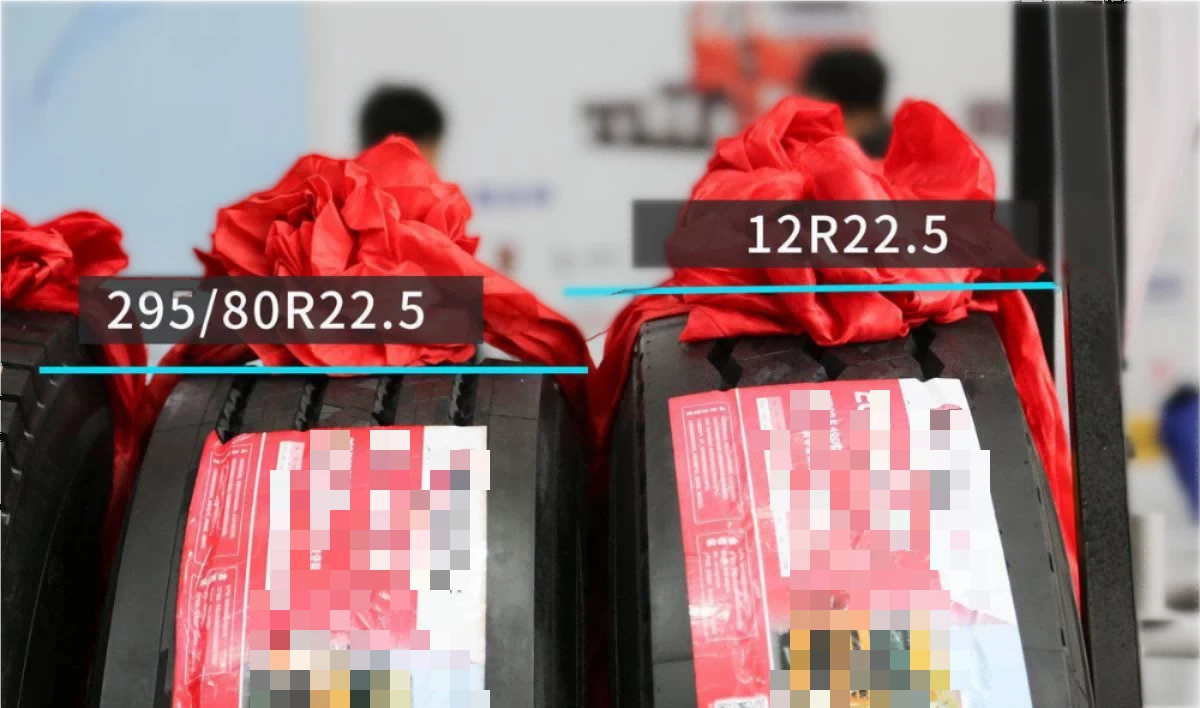The difference between 295/80R22.5 tire and 12R22.5 tire
Nov 26, 2024
First, we need to understand the tire's specification coefficient. In terms of measurement units, tires mainly have metric and imperial units, and metric units are international units.
The imperial units are currently widely used in countries such as the United States, Libya and Myanmar. For example, the common units such as inches, pounds and gallons.
The common 12R22.5 tires we see use the imperial system. 12 stands for the wheel section width of 12 inches, which is approximately equal to 30.48 cm (section width can be understood as the data at the widest part of the tire sidewalls on both sides). R stands for radial tires, and 22.5 stands for the tire rim (wheel) diameter of 22.5 inches, which is approximately 57.15 cm.
In addition, another common 295/80R22.5 tire uses the most widely used metric unit. 295 also represents the section width, which is 295mm, or 29.5cm. And 80 is the aspect ratio of the tire, which means that the height of the cross section of the tire is 80% of the tire width, 29.5cmX0.8=23.6cm.
So what is the difference between 295/80R22.5 tires and 12R22.5 tires?
Width difference: First of all, the difference in width between the two tires is very obvious. The widest part of the 12R22.5 tire is 30.48 cm, while the widest part of the 295/80R22.5 tire is 29.5 cm. The difference between the two is about 1 cm. So the question is, is there a difference between the tire section width and the tire tread width?
The tire section width can be understood as the cross-sectional width of the tread on both sides of the tire under normal pressure, and the tire tread width refers to the width of the tire contact surface. Taking 12R22.5 as an example, the common inflated section width is 30cm, and the tread width is mostly concentrated around 23cm and 24cm. Dump trucks pursue driving force, and the tire width can reach about 25cm. For 295/80R22.5, the inflated section width is about 29.8cm, and the tread width is mostly 24cm.
Let's talk about the advantages first. Regardless of the specifications of the tire, choosing a wider tread tire will bring a larger contact area. Even for heavy trucks with the same output horsepower, the same load, and the same tire pattern, choosing a wider tire will improve the vehicle's grip and anti-skid capabilities. Especially in relatively harsh working conditions, it can bring better driving performance. At the same time, it will also bring slight differences in driving stability and braking distance.
However, a larger contact area does not mean a better tire, as such tires also have shortcomings. For example, among 12R22.5 tires of the same specification, choosing a 24cm/25cm tire with a larger tread width will provide better grip, but will also produce stronger rolling resistance, which will have a certain impact on fuel consumption performance.
Tire diameter difference: People often ask, are 12R22.5 and 295/80R22.5 tires the same size? In fact, the question here is the diameter of the tire. The answer is yes, the diameter of the 295/80R22.5 tire is smaller.
Let's take the Bridgestone R150 tire as an example. The difference between the outer diameters of 12R22.5 and 295/80R22.5 is about 4.6 cm, and the 295/80R22.5 is relatively smaller.

In short, the diameter of a 295/80R22.5 tire is smaller than that of a 12R22.5 tire, which results in a different rolling radius and tire circumference. Therefore, if the tires rotate the same number of times, the 12R22.5 will travel a longer distance. Therefore, don't underestimate the 2.5 cm radius difference. Under long-term use conditions, there will definitely be a difference in fuel consumption between the two.
In addition, since the overall radius of the 295/80R22.5 tire is smaller, the frame height and the saddle height from the ground can be lowered, which allows for more room for choosing the height of the trailer. If the tractor needs to have a larger load capacity, a tire with a smaller aspect ratio can be used.
Relatively speaking, under the same tire pattern and tire material, 295/80R is a low-profile tire. It has relatively better handling performance, smaller deformation under heavy load, and higher tire stability, but it has correspondingly higher requirements for the tire's production process and materials.
From the above information, it seems that 295/80R22.5 tires are lighter, smaller, and more fuel-efficient than 12R22.5 tires. So is there a difference in the load factor?
We can actually pay close attention to the markings on the tires. Usually, no matter what type of tire it is, there will be two other markings that represent the load-bearing performance, the load factor and the PR tire level. For example, the common 152/148M marking, where 152/148 represents the load index, refers to GB/T 2977-2016 tire specifications, dimensions and loads, and we can see that the single-wheel load capacity of the two is 3550kg, and the double-wheel load is 3150kg, which means that there is no difference in the load-bearing performance of the two.




